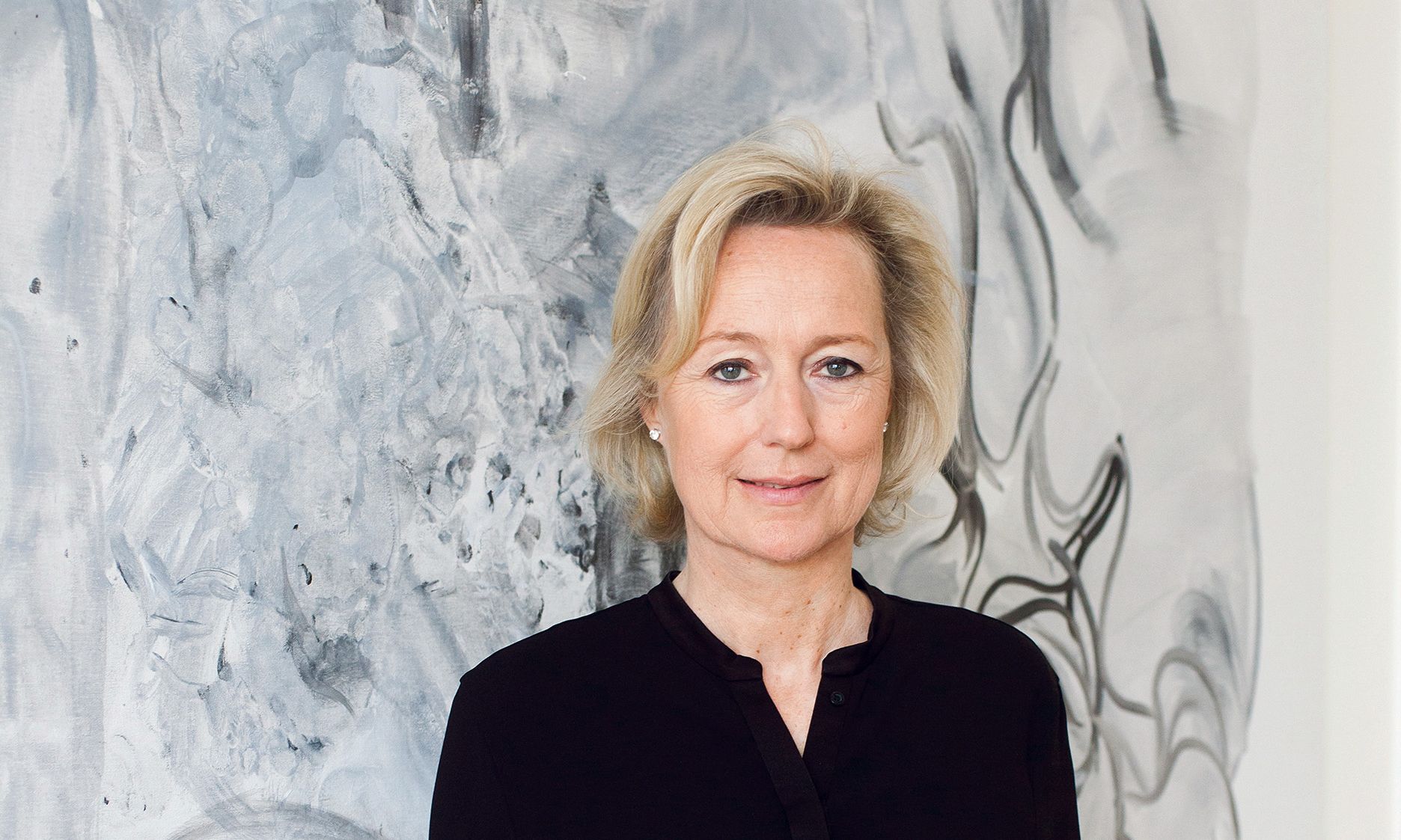Carolin Scharpff-Striebich's collection is combined with that of her parents, Rudolf and Ute Scharpff Photo: Regine Petersen
Carolin Scharpff-Striebich is a native of Darmstadt, Germany, who worked in marketing before 2004, when she took over the contemporary art collection that her parents, Rudolf and Ute Scharpff, began building in the 1990s. Around 2008, she began combining her own collection with that of her parents in what she calls the “open depot”, and making select works available for public museums in Germany to display. Scharpff-Striebich is also active in the museum sphere, and serves on the acquisitions board at Tate Modern in London and the steering committee at the Kunstsammlerverein in Berlin, as well as being a trustee at both the Kunsthalle Tübingen and the Staatsgalerie Stuttgart.
Eamon Ore-Giron’s Talking Shit with Amaru (Wari) (2023); the artist is featured in this year’s Whitney Biennial Photo: Charles White/jwpictures.com; © Eamon Ore-Giron, 2024; Courtesy the artist and James Cohan, New York
The Art Newspaper: How quickly do you decide to buy a work of art?
Carolin Scharpff-Striebich: If I know the artist, I can make a quick decision. If I don’t, it takes me longer. If their work causes me a sleepless night, I know I am on the right path. It’s important for both my senses and my heart—or, rather, my gut feeling—to be engaged. Additionally, the work must fit into my collection, which I aim to develop and expand strategically. I make an effort to avoid impulse purchases and not to repeat mistakes. Before every fair, I remind myself to be patient and wait until I find the right piece. Sometimes, that’s more difficult than you think.
What was the first work you ever bought?
My initial acquisition was a piece by the German painter Thomas Arnolds.
I was so taken by it that, a month later, I purchased another work of his. His inspiration stemmed from painting his surroundings, such as his kitchen and garage, giving his work a deeply personal touch.
What was the last work you bought?
The most recent piece I acquired was by Eamon Ore-Giron, an artist featured in this year’s Whitney Biennial. Born in the US with South American roots, Ore-Giron intertwines his cultural background with European art history, albeit subtly. What captivated me most were his magical colours, which add a unique allure to his work.
What do you regret not buying when you had the chance?
I once had the opportunity to buy a painting by Amy Sillman. It was a wonderful abstraction that I still think about today, but for some reason I hesitated and let the opportunity pass. Sometimes it’s the missed opportunities that stick in your mind the most and show you how important it is to be brave at the right moment.
If you could have any work from any museum, what would it be?
In my school textbook, there was the winter landscape Homecoming of the Hunters (1565) by Pieter Bruegel the Elder. I would love to have this frozen world, which was so much more exciting than the lessons, hanging in my home. In his works, time seems to stand still, and it feels as if you could set it in motion again. The viewer is nearly included in the scene, always discovering something new.
The beer garden at Au Violon enjoys commanding views over Basel’s rooftops Courtesy Au Violon
Where do you like to eat and drink while you are in Basel?
During the fair, since the weather is typically delightful, I prefer to spend time outdoors. My favourite spot is the beer garden at Au Violon. Sitting beneath the chestnut trees, you can gaze out over Basel’s rooftops while savouring excellent cuisine. Pro tip: use the elevator to reach the restaurant—it’s a unique experience. Another gem is the terrace at Hotel Krafft. From there, you can observe swimmers in the Rhine and soak in the vibrant atmosphere along the river promenade.
Do you have any parties lined up?
Parties, if they happen, are great, but I find more fulfilment in sharing a delightful dinner with individuals from diverse backgrounds, engaging in conversations about art from around the globe.
What is your least favourite thing about art fairs?
To line up for water and a bite to eat.
Where do you go in Basel to get away from it all?
I visit Basel specifically to immerse myself in everything it has to
offer, and I thoroughly enjoy the experience.
What tip would you give to someone visiting Basel for the first time?
Find out in advance about the participating artists, galleries and exhibitions represented at the fair and in Basel. Allow enough time to explore and engage in conversations. Most importantly, allow yourself to be inspired by the diversity and beauty of art.

